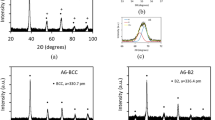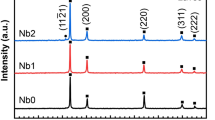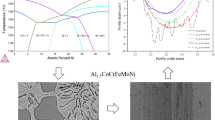Abstract
The conditions for the transition from the formation of mixed scales to the exclusive oxidation of the component B, forming the most stable oxide, are examined for both single-phase and two-phase binary A-B alloys by taking into account the displacement of the alloy-scale interface due to the growth of the protective oxide. This procedure eliminates the inconsistencies arising from Wagner's classical treatment for single-phase alloys when the interdiffusion coefficient in the alloy is small with respect to the parabolic rate constant for outer-scale growth; but the same procedure leads to a significantly-improved treatment also for two-phase alloys. For the latter systems, the transition is shown to depend also on the solubility of B in the A-rich phase.Moreover, the exclusive growth of the most-stable oxide is more difficult than for single-phase alloys because it requires higher average concentrations of B in the alloy and may even become impossible if the parabolic rate constant of oxidation is large with respect to the interdiffusion coefficient in the alloy.
Similar content being viewed by others
References
P. Kofstad,High Temperature Corrosion (Elsevier Applied Science, New York, 1988).
C. Wagner, Z. Elektrochem.63, 772 (1959).
C. Wagner,J. Electrochem. Soc. 99, 369 (1952).
R. A. Rapp,Corrosion 21, 382 (1965).
F. Gesmundo and F. Viani,Oxid. Met. 25, 269 (1986).
G. Wang, B. Gleeson, and D. L. Douglass,Oxid. Met. 35, 317 (1991).
G. Wang, B. Gleeson, and D. L. Douglass,Oxid. Met. 35, 343 (1991).
I. G. Wright, Metals and Ceramics Information Center, Report 72-07, Battelle Institute, Columbus, 1972.
F. Gesmundo, F. Viani, Y. Niu, and D. L. Douglass,Oxid. Met. (submitted for publication).
F. Maak,Z. Metallk. de 52, 545 (1961).
T. Hodgkiess, G. C. Wood, D. P. Whittle, and B. D. Bastow,Oxid. Met. 14, 263 (1980).
Author information
Authors and Affiliations
Rights and permissions
About this article
Cite this article
Gesmundo, F., Viani, F., Niu, Y. et al. The transition from the formation of mixed scales to the selective oxidation of the most-reactive component in the corrosion of single and two-phase binary alloys. Oxid Met 40, 373–393 (1993). https://doi.org/10.1007/BF00664498
Received:
Revised:
Issue Date:
DOI: https://doi.org/10.1007/BF00664498




